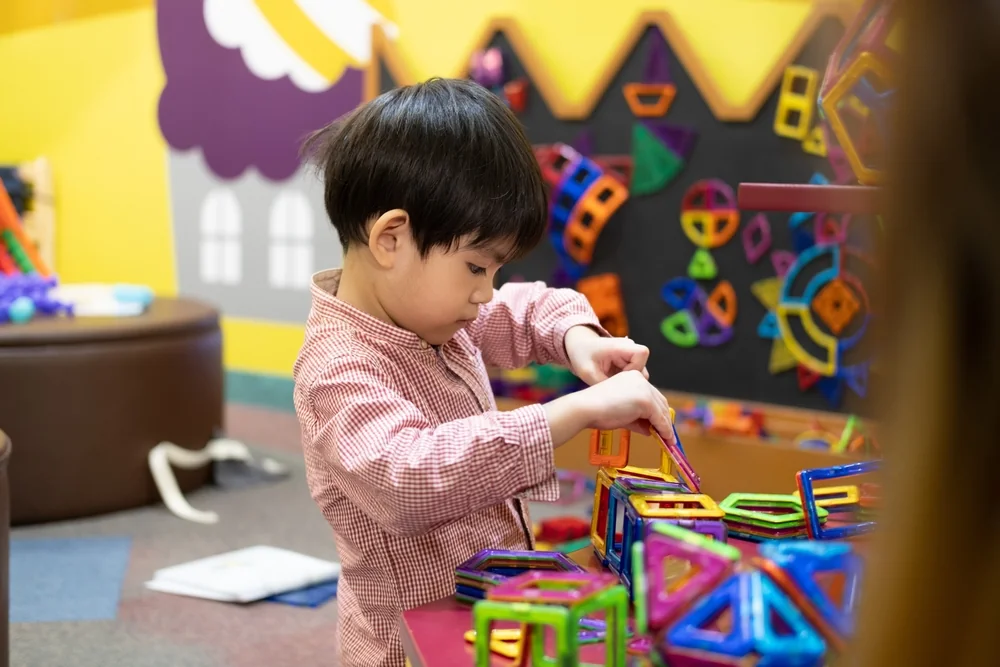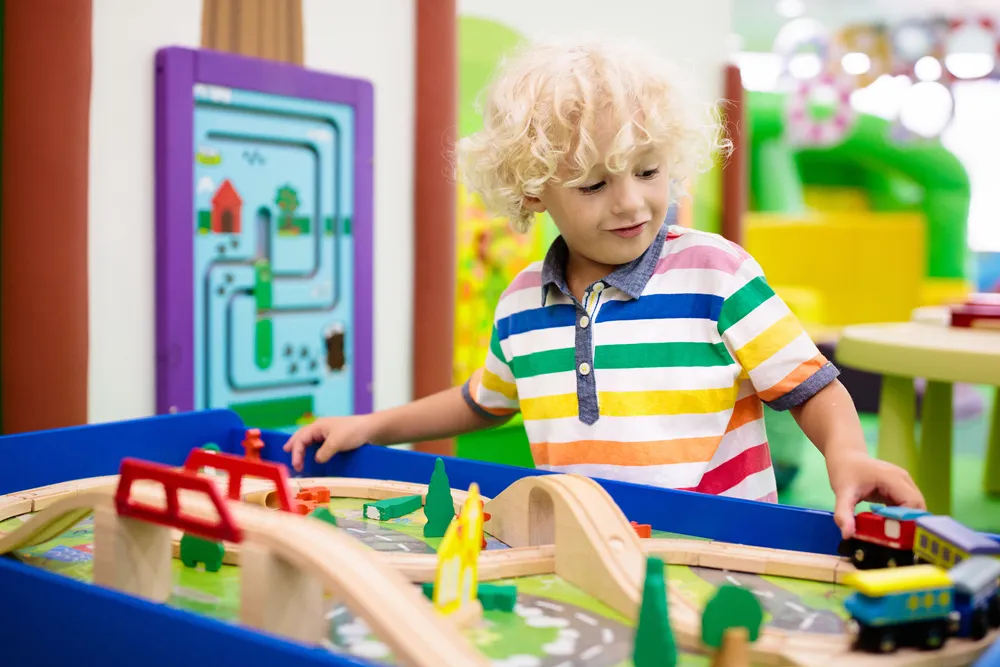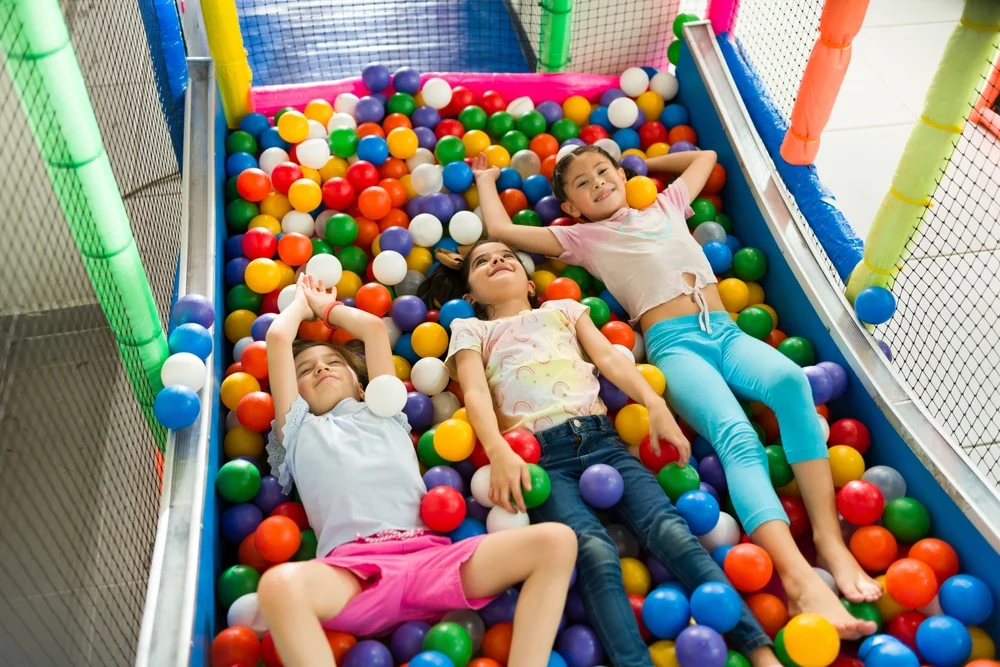Playgrounds are powerful community spaces because this is where children learn, explore and connect through play. Yet for many families, traditional designs still create barriers that exclude kids with different mobility, sensory or developmental abilities. At Playtec, we believe play should unite, not divide. That’s why we champion inclusive playground equipment that ensures every child, regardless of ability, feels empowered to participate, share joy and build confidence.
Community play area design isn’t just about compliance; it’s about empathy and imagination. By embracing universal design principles, diverse experiences and thoughtful layouts, we can create outdoor environments that nurture learning, connection and belonging for everyone. Let’s get into it!

Principles of Universal Design in Playground Equipment
Designing a playground that welcomes every ability starts with universal design, an approach that anticipates diversity rather than reacting to it. Instead of adding accessibility as an afterthought, inclusive design weaves it into every element of the playground. From ramps to seating to interactive panels, every feature should work for all, regardless of age, strength or ability.
Key Considerations for Mobility and Sensory Access
When planning inclusive playgrounds, designers must create a balance between physical challenge and engagement for those who use wheelchairs, walkers or other aids while also supporting kids who experience sensitivities. Important considerations include:
- Continuous access routes: Smooth, slip-resistant pathways connecting all play zones without dead ends.
- Transfer-friendly equipment: Platforms that let young users move independently from mobility aids onto slides, spinners or climbers.
- Tactile and auditory cues: Panels and textures that appeal to different senses, helping visually impaired children explore safely.
- Inclusive signage: Using icons and colours to guide all users clearly and intuitively.
Examples of Successful Inclusive Features
Across Australia, we’ve seen how inclusive design can turn ordinary parks into places of laughter and connection, where every child finds a way to join in, no matter their ability.
- Accessible carousel systems designed for wheelchair use encourage shared spinning experiences.
- Adaptive swing sets with harnesses and back support help experience motion safely.
- Multi-level play towers connected by ramps allow children with and without mobility aids to explore together.
- Musical gardens and tactile paths offer gentle stimulation for those who may find traditional equipment overwhelming.
The Role of Collaboration in Universal Design
Truly inclusive design is a collaborative process. Councils, designers, educators and families all play a part in shaping playgrounds that reflect real community needs. As professionals, consultation and on-site assessments ensure each playground feels local, accessible and empowering, blending imagination with function.

Integrating Play Panels for All Children
Play panels are one of the most effective tools for inclusive play. They allow kids to engage cognitively, socially and sensorially without needing physical exertion or height access. In playgrounds, integrating play panels tailored to various abilities can transform underused areas into vibrant, inclusive hubs of interaction and creativity.
Sensory-Rich Panel Options
Sensory panels offer experiences that spark curiosity and encourage exploration. They provide opportunities for young ones to express themselves and develop coordination through touch, sight and sound. Here are some examples of sensory-rich panels:
- Music panels: Featuring xylophones, bells or drums for rhythmic interaction.
- Tactile boards: With different textures, spinning dials and raised patterns to enhance tactile learning.
- Visual discovery panels: Using mirrors, kaleidoscopes and light-reflective materials to engage visual processing.
- Interactive puzzles: Combining fine motor tasks with problem-solving play.
Adapting Play Panels for Varied Needs
Every child experiences play differently. Inclusive design means continuing to offer flexibility, ensuring that the same panel can support both quiet and social experiences. You might want to try these design tips:
- Installing panels at multiple heights for standing or seated access.
- Selecting panels with gentle colours and natural materials for sensory-sensitive users.
- Including adjustable sound levels or touch intensity to suit diverse preferences.
- Positioning panels along pathways to encourage spontaneous participation by all visitors.
Cooperative and Imaginative Play
Beyond exploratory engagement, play panels can serve as bridges for social connection. Storytelling boards, role-play panels and interactive maps allow children to communicate and collaborate, breaking down barriers and building friendships across differences.
Safety and Comfort in Inclusive Playground Design
Creating an equitable playground design means safety, comfort and dignity in mind. Every child should feel secure enough to try new challenges and explore freely. The goal isn’t to remove all risk but to manage it intelligently through design that supports safe discovery and independence.
Choosing Surfaces That Support Mobility and Reduce Injury Risk
The choice of surfacing can define how inclusive a playground truly is. A well-planned surface not only cushions falls but also promotes easy movement for mobility devices and prams. The best surface materials for accessible play environments are:
- Rubberised soft-fall: Offers consistent traction and high impact absorption.
- Synthetic grass with a firm base: Combines comfort and aesthetics.
- Engineered wood fibre (EWF): Eco-friendly and certified for wheelchair mobility.
As professionals, we ensure all surfacing solutions align with Australian Standards AS 4685 and AS 4422, prioritising safety without compromising design creativity.
Providing Shade, Seating and Quiet Zones for Diverse Needs
Comfort is a vital part of inclusivity. Some children recharge best in calmer corners. By adding shaded rest zones, soft seating and quiet nooks away from the action, we create safe spaces where kids can reset before joining the fun again. Considerations include:
- Installing shade sails and mature trees for UV protection and balance.
- Providing benches with armrests for adults and carers who supervise or join in.
- Including quiet zones away from noise for young users who need downtime regulation.
- Adding drinking fountains, restrooms and changing areas designed for accessibility.
Designing for Visual and Acoustic Comfort
Lighting and sound control are often overlooked but critical in inclusive environments. With this, use soft, even lighting to reduce glare and improve visibility. Also, remember to position musical or moving equipment strategically to avoid sound overload. Lastly, involve textured pathways that signal transitions between calm and active zones.

Beyond Accessibility: Encouraging Intergenerational and Social Play
An inclusive playground isn’t only for children with disabilities; it’s for everyone, including parents, siblings, grandparents and carers. By designing spaces that encourage interaction between age groups and abilities, we foster stronger communities built on understanding, empathy and shared joy.
Intergenerational Interaction
When playgrounds are designed with inclusivity in mind, they can evolve from simple play areas into vibrant community gathering spaces where people of all ages and abilities come together. Intergenerational interaction is one of the most rewarding aspects of inclusive design because it helps bridge the gap between generations to share moments of laughter, learning and companionship. These shared experiences are emotionally fulfilling and have a role in strengthening family bonds and fostering a sense of belonging within the local community. Examples include:
- Fitness equipment near play areas for adults to stay active while they play.
- Seating clusters and garden spaces that invite conversation.
- Interactive art walls or tactile gardens where people collaborate on creative tasks.
Promoting Social Play and Empathy
Play spaces are powerful teachers; they cultivate physical coordination and emotional intelligence. When youngsters play together, they naturally learn how to communicate and appreciate differences. Social play is therefore one of the cornerstones of inclusive design. It transforms playgrounds from individual activity zones into shared experiences that help develop important social skills like teamwork, patience and compassion. Some design strategies are:
- Group play zones that accommodate multiple users.
- Equipment like inclusive carousels or sand tables for cooperative play.
- Storytelling or role-play corners to encourage imaginative communication.
Designing community play areas for every ability is both a social responsibility and a creative opportunity. By combining universal design, sensory-rich play and community collaboration, we can create playgrounds that reflect diversity and compassion. At Playtec, our mission is to deliver inclusive playground equipment that inspires independence, ensuring every child and family can share the joy of play without limits.



